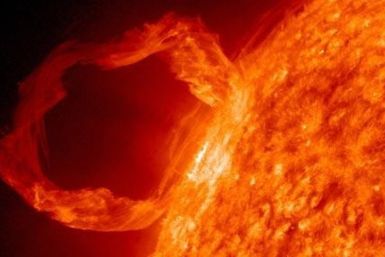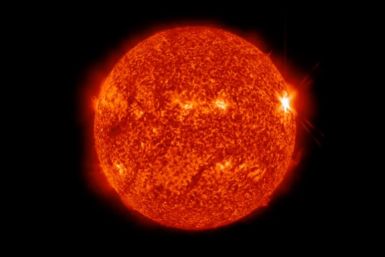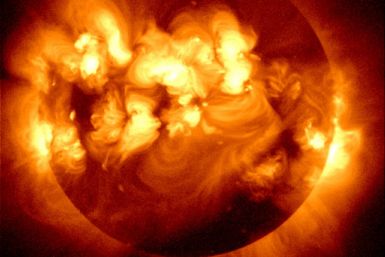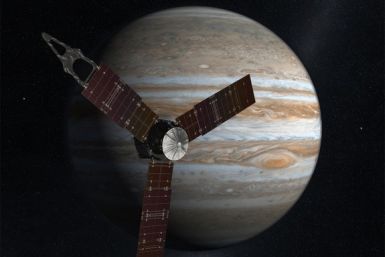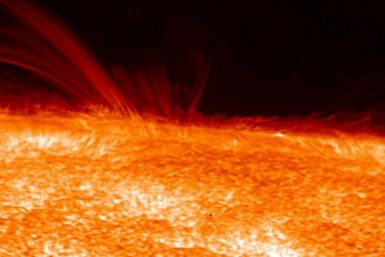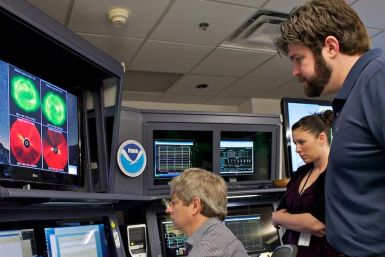Scientists at NASA'S Solar Dynamics Observatory have captured brilliant images of the iconic surfer's wave rolling through the atmosphere of the sun.
Solar industry revenue will shrink before it begins to rise again because dramatic price declines on solar panels will outweigh corresponding volume increases, according to a new report by Lux Research.
First Solar Inc Chairman and former Chief Executive Michael Ahearn sold more than $68.5 million of the company's stock in three days this week, a move that reduced his holdings by nearly 90 percent.
Power grids, GPS systems and satellites could be among the technologies affected by surges of energy released by the sun's swelling magnetic field, according to the National Oceanic and Atmospheric Administration (NOAA).
Powerful bursts of energy from the sun are set to become increasingly common in the next few years, potentially disrupting the earth's magnetic field in a way that could affect power grids, GPS systems and satellites, according to the National Oceanic and Atmospheric Administration (NOAA).
This week, the world was warned of solar flares that could possible shut down electrical and communication grids. Scientists are saying the sun will near maximum level of activity in 2013.
A new solar flare Tuesday is the biggest in several years and is part of a pattern of solar storms scheduled to last until 2020, experts say.
An extremely powerful solar flare, which is the largest in the current solar weather cycle, rocked the Sun on Tuesday, resulting in coronal mass ejection (CME). But as the gigantic bursts of radiation occurred near the western limb of the sun, it is unlikely to wreak any serious havoc on Earth.
The sun was rocked by an extremely powerful solar flare on Tuesday, which, according to scientists, was the largest in four years. However, the bursts of radiation were not likely to cause any serious chaos on Earth since they were not aimed at the planet, they added.
Early Tuesday, the sun unleashed an extremely powerful solar flare, the largest of the current sun weather cycle which began in 2008.
The sun emitted a powerful solar flare on Tuesday, which is the largest in five years, but the bursts of radiation weren't in the direction of Earth and so there will be little impact on satellite and communication systems, scientists say.
The solar eruption was facing away from the Earth, averting potentially major disruptions.
The annual Perseid meteor shower, which is caused by debris from Comet Swift-Tuttle and observed for about 2000 years, will be at peak coming Friday and Saturday. There might be some serious hamper for viewers due to the full moon on Saturday.
The US National Oceanic and Atmospheric Administration (NOAA) has predicted the occurrence of a severe solar storm that could wreak havoc on Earth and severely disrupt human health and property.
U.S. National Oceanic and Atmospheric Administration predicted four "extreme" solar emissions which could threaten the Earth this decade, and with solar flare activity expected to peak around 2013, the Sun is entering a particularly active time and big flares like recent one will likely be common during the next few years, federal scientists say.
Juno's mission is to unlock the mysteries of Jupiter, the solar system's biggest and most mysterious planet.
Solar storms or the current of charged particles from the sun, in the event of hitting earth, could potentially wreak havoc on the planet causing power outages, scrambled GPS and communications failure. It could leave us in the dark for months together by generating overlapping electrical currents in Earth's magnetosphere.
The National Oceanic and Atmospheric Administration, a federal agency that focuses on the condition of the oceans and atmosphere, said that a severe solar storm could cause global chaos, wreck satellite communications and take down the most important power grids in the world for a period of years.
Three large solar explosions from the Sun are threatening to cause chaos on earth, with energy from the release potentially shutting down communications systems and power grids across the world.
As Sun moves into the peak of its 11-year activity cycle, powerful solar flares erupted, triggering massive magnetic storms that could disrupt communication systems in Earth. The solar eruption will also cause spectacular auroras, which will be visible in northern America. Here are some details about auroras:
The U.S. government has put on alert users of satellite, telecommunications and electric equipment as solar eruptions that happened over the past couple of days are set to trigger intense magnetic storms.
US Federal Government studies revealed that extreme solar activity and emissions may result in complete blackouts for years in several areas of the US.












